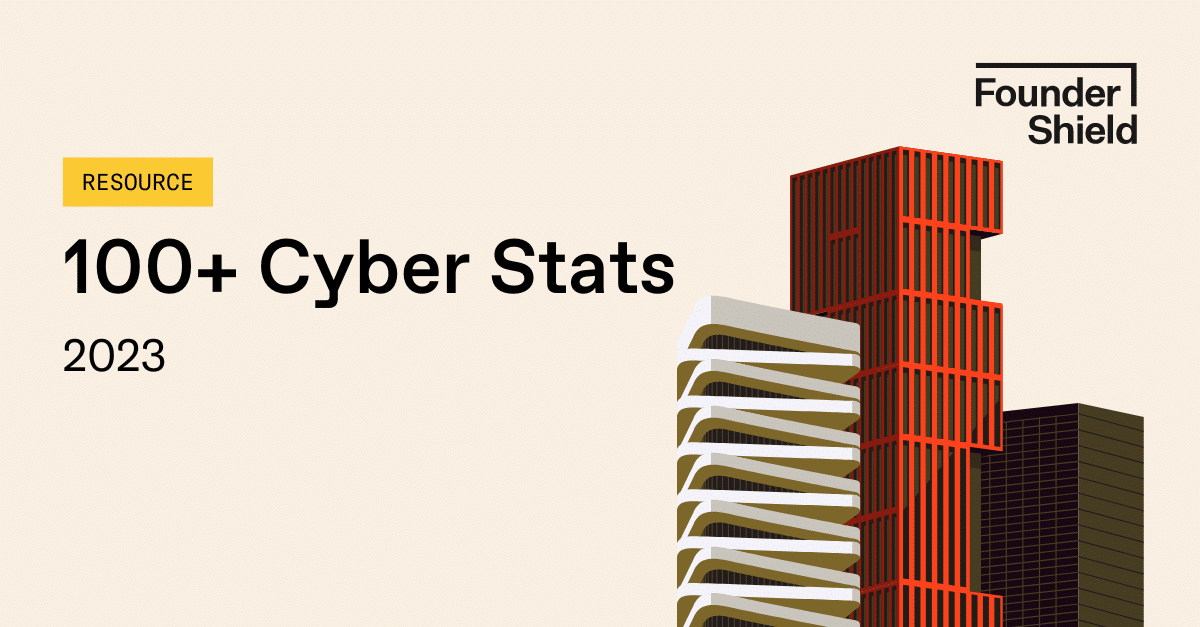Key Takeaways
After 2021 broke almost every record possible in the venture capital (VC) funding space, the 2022 slowdown wasn’t a surprise. Persistent inflation, rising geopolitical tension, and the crypto collapse were some of the factors influencing the bear market that followed 2021.
Residual capital from 2021 helped investors save enough dry powder to keep going in 2022 — but at a slow pace. However, as the market weakened even more in Q1 2023, many believe investors will spend more conservatively while waiting for deal values to decrease.
Nonetheless, this shouldn’t discourage founders. 2023 is expected to return startup funding to normal, and the ups and downs of the past year won’t repeat themselves too soon.
For a clearer picture of the VC funding scene, we’ve compiled 100 stats to inform startup founders about where investors stand and where to set their sights for 2023.
General VC Funding Trends
- Although 2022 the number of new VC funds decreased compared to 2021, funding amounts broke new records with a total of $162.6 billion. – Pitchbook
- Despite not living up to 2021 numbers, VC investments had their second-best year to date, with $209 billion raised in 2022. – Ernst & Young
- Down and flat rounds represented 15% and 12% of deals made in Q1 2023, respectively. That’s the highest percentage of down rounds since Q2 2020 and a new record for flat rounds. – Cooley GO
- Rampant inflation rates in 2021 meant that by the end of 2022, the median market cap of 2021 US tech Initial Public Offerings (IPOs) was down by 63%. – SVB
- Due to legislation favoring the development of renewable energy initiatives in the US, there were three major VC investments in cleantech in Q4 2022: Anduril, $1.5 billion; TerraPower, $830 million; and Form Energy, $450 million. – KPMG
- Alumni Ventures was a consistent top investor for angel-seed, early- and late-stage funding in 2022. They were surpassed only by Soma Capital and Andreessen Horowitz in early-stage and Gaingels in late-stage. – Pitchbook-NVCA
- According to fintech deals reporters, investors expect the second half of 2023 to pick up in M&A and down-round deals as companies that raised at high valuations in 2021 start running out of capital. – Axios Pro
- US VC funds are expected to raise around $70 billion in 2023. This is a 50% decrease from 2022 but still the fourth-highest year ever. – SVB
- In the US, B2B, energy, and software startup funding held firm throughout 2022, with 2021 levels. – KPMG
- The end of 2022 left founders wondering if a sharp investment decline was on the horizon. Q4 investments decreased by 14% from $37.9 billion in Q3. – Ernst & Young
- Private Equity (PE) deal performance gave a return of -9% in September 2022. This is the first time negative returns have shown up since 2008. – McKinsey
- Exits are expected to remain low for the first half of 2023 due to rising interest rates and the threat of a global recession. – Pitchbook-NVCA
- In the US, San Francisco, New York, Los Angeles, and Boston remained the best startup ecosystems in 2022. – StartupBlink
- OpenAI started 2023 at the top of the charts with the highest VC funding round so far ($10 billion), completely backed by Microsoft. In second place was Stripe, with $6.5 billion. – Crunchbase
- Unicorn formation, when a startup is valued at $1 billion or higher, dropped to only one in Q1 2023—the lowest it’s been since 2016. – CB Insights
- The crash of Silicon Valley Bank (SVB) on March 10, 2023, meant that 200,000 startup depositors with $5 million or less in revenue scrambled to secure funds for payroll that month. – Crunchbase
- J.P. Morgan advises startups to balance near-term macro challenges with long-term opportunities. – Pitchbook-NVCA
- Fund formation is on the decline entering 2023. While VCs raised $157.6 billion in the first nine months of 2022, by the end of Q4, they only raised $7.1 billion. – Ernst & Young
- In 2022, 80% of all deals made included nontraditional investors. – Pitchbook-NVCA
- Although 2022 didn’t live up to the funding volume in 2021, investors still invested $100 billion more than in 2020. – Crunchbase
- Nontraditional investors (hedge funds, private equity firms, sovereign wealth funds, and CVC firms) started backing away from making new deals in 2022. There were 4,617 active investors in 2022 compared to 5,330 in 2021. – Pitchbook-NVCA
- Investor interest in super-apps, all-in-one places like WeChat or Alipay, where users can perform financial and personal activities, increased once more in Q4 2022. – CB Insights
- Compared to 2021, where deals greatly benefitted founders, VC deals in 2022 became more investor-friendly in terms of equity. – Pitchbook
Seed-Stage Funding Statistics
- The last two quarters of 2022 saw the sharpest decrease in funding. Seed-angel investments were the steadiest compared to 2021, with a flat year-over-year funding amount. – Crunchbase
- The average deal size for angel-seed startups in 2022 increased by 17% YoY but decreased by 3% from Q3 to Q4. – CB Insights
- Q4 2022 had a surprising decline of 33% in investments for seed-stage startups compared to Q3. – Carta
- Seed-stage valuations in 2022 increased by 16.7% from the year prior and sat at $10.5 million. These are the highest valuations since 2012. – Pitchbook
- Pre-seed and seed investment activity in Brazil was stable in Q1 2023 as investors focused on startups with good return potential. – KPMG
- Average seed-stage deal values reached an all-time high in 2022 at $3.7 million, but this began dipping in 2023. – Crunchbase
- Tech valuations for seed-angel stage startups increased by 3% from Q4 2021 to Q4 2022. Although marginal, it’s the only stage that reflected gains in the sector. – CB Insights
- Angel-seed funding has declined after making an incredible 2,065 deals in Q1 2022. In Q1 2023, it reached a low of 971 deals. – Pitchbook
- Q1 2023 seed capital raised decreased by 68% from the same quarter the previous year. – Carta
Early-Stage Statistics
- As opposed to other stages, early-stage valuations rose in 2022 to reach $132 million from $25.2 million the prior year. – Pitchbook
- As per Crunchbase, 2023 will be a challenging year for funding in Series B and later stages. – Crunchbase
- While the median seed-stage round dropped by 11% YoY in Q1 2023, Series A fell a stark 47% over the same period. – Carta
- While early-stage startups had a less traumatic year than later stages, quarterly analysis shows that valuations dropped by 33.3% from Q1 to Q4 2022. – Pitchbook
- Series A tech deals in the US are expected to decrease by 15% to 1,250 in 2023, which were stable numbers between 2015 and 2020. – SVB
- Most founders of early-stage startups that received $500,000 or higher in funding came from Standford, MIT, and Harvard – Crunchbase
- The average deal size of Series A funding in 2022 fell by only 1% YoY but decreased by 7% from Q3 to Q4. – CB Insights
- Series A funding deals in 2016 were $9.6 million on average. In Q1 2023, the average was $18.7 million. – Crunchbase
Early-stage startups had their lowest deal count in Q1 2023 (825) since Q3 2020 (830). – Pitchbook
Late-Stage Statistics
- In 2014, Series B funding deals were an average of $16.3 million. In Q1 2023, they were $40 million (a slight decrease from 2022). – Crunchbase
- Late-stage startups are predicted to reach a market volume of $288.1 billion in 2023. – Statista
- The venture growth stage, which proceeds late-stage startups, took 41% of all venture debt in 2022. – Pitchbook-NVCA
- Deal counts for Series D funding fell by 90% from Q4 2021 to the same quarter in 2022. The amount invested dropped by 97%. – Cooley GO
- Late-stage startups saw the sharpest decrease in funding by more than half YoY, receiving only $10.4 billion in Q4 2022 compared to $32.4 billion in the same quarter in 2021. – Crunchbase
- Late-stage startup valuations fell steadily in 2022 due to market volatility. The average stage valuation was $470 million in Q4. – Pitchbook
- Series C tech valuations from Q4 2021 to Q4 2022 had the biggest drop from all stages, falling by 50%. – CB Insights
- The average Series C funding deal in 2014 was $26.4 million. In Q1 2023, it was $59 million—a stark drop from 2022’s average of $74 million. – Crunchbase
Industry Trends
- Healthtech deals fell by 25% to 4,523 in 2022. – Axios Pro
- Fintech funding increased by 55% in Q1 2023, but only due to Stripe’s $6.5 billion funding round. Without it, the industry’s funding fell by 12%. – CB Insights
- The technology, media, and telecommunications industries attracted the most investors in December 2022, with 37.2% of total funding raised. The industrial sector and healthcare followed. – S&P Global
- Software-as-a-Service (SaaS) startups continued taking the biggest piece of the pie, with 45% of total investments made in 2022. – Dealroom
- M&A deals for cybersecurity VC-backed startups started strong in 2022, with 31 in Q1—eight more than in Q4 2021. – Crunchbase
- Fundraising for infrastructure and natural resources startups reached an all-time high in 2022 with $158 billion. – McKinsey
- Fintech deal counts in the US saw their second biggest year, with 1,935 in 2022. However, deal values began declining with a $23.3 million average compared to $31.1 million in 2021. – Pitchbook-NVCA
- There are high expectations for the climate and sustainability tech startups in 2023 as 2022 deals matched 2021 levels and valuations remained high. – Axios Pro
- Fintech M&A deals in Q1 2023 saw a 37% decline YoY at 51 from 87 in Q1 2022. – Crunchbase
- Biotech and Pharma deal values in 2022 for seed and early-stage startups increased from the year prior by $0.4 million and $5.2 million, respectively. – Pitchbook
- The robotics industry has raised $90 billion from 2018 to 2022. – F-Prime Capital
- In the US, the state of Massachusetts led the way for renewable energy startups in 2022 by raising $1.1 billion in funds. – Carta
- Autonomous vehicle technologies ruled the robotics sector from 2018 to 2021, receiving over half the investments in the industry. Investors recoiled in 2022, putting most of their money in vertical robotics instead. – F-Prime Capital
- Deal values in the Artificial Intelligence (AI) industry fell by 41.8% in 2022. However, after declining for six straight quarters, deal volume and values increased by $2.8 billion in Q4. – GlobalData
- The industrial sector will see an increase in IPOs in 2023 as end markets prioritize sustainable initiatives. The focus is on electric vehicles and renewable energy startups. – Ernst & Young
Exit Strategy Trends
- According to PwC, the IPO market should gain traction once again in 2023 due to remaining investable cash. – PwC
- In the US, M&A deal values fell by 39% and volumes by 15% in 2022. – Axios Pro
- Exits were also hit by the rough market in 2022. Activity value dropped to $71.4 billion from $753.2 billion in 2021. – Pitchbook
- Uber has recently had one of the costliest losses in startup acquisitions. In 2020, the company acquired Careem, a ride-hailing app headquartered in Dubai, for $3.1 billion. On April 10, 2023, Uber announced selling it to Emirates Telecommunication Group for $400 million. – Crunchbase
- Global IPOs in Q4 2022 were cut to almost half from Q4 2021. – Ernst & Young
- There were 1,208 exits reported in 2022 compared to 1,925 the year prior. – Pitchbook
- For the first time since Q1 2013, exit values were less than $10 billion in Q4 2022 at $5.2 billion. – NVCA
- APAC IPOs in Q1 2023 accounted for 66% of all global IPO revenue. – PwC
- Average IPO valuations in 2022 fell to the lowest levels since 2016 at $106 million. – Pitchbook
- M&A deals were expected to increase globally as IPOs and VC deals decreased. However, the number of M&As in Q1 2023 fell by 31% from the year prior. – Crunchbase
- There were 631 IPOs in the tech industry in 2021, whereas only 310 in 2022. And while the energy sector had a decrease in the number of IPOs in 2022, their proceeds increased by 16%—the most of any sector. – Ernst & Young
- Acquisitions dominated the exit market in 2022 by making up nearly 50% of all exit values. This breaks from historical trends where IPOs were a majority. – Pitchbook-NVCA
Diversity, Equity, and Inclusion Statistics
- In 2022, female founders had their second-best year after 2021, with $41 billion in funding for startups founded by at least one woman in the US. – Pitchbook-NVCA
- African startups led by women raised $203.2 million in 2022. – The Big Deal
- Female founders continue getting a smaller piece of the pie in VC deals, with 17.2% of all US deal values in 2022. This was a slight growth from 2021. – Pitchbook-NVCA
- Diverse founders in 2022 say there’s been a 52% increase in investment interest and a 36% increase in investment. – Morgan Stanley
- The Harvard Business Review reports that female founders backed by female-led VCs are less likely to raise a second round due to attribution bias. – Harvard Business Review
- Newer (10 years or less) and smaller VC firms remain the most diverse, with 8% of employees being black, 8% Hispanic, and 22% female. – NVCA
- The rise of social movements in 2020 led 43% of VC investors to prioritize funding multicultural-funded startups. However, as these movements lose traction, a 2022 survey revealed this number dropped to 32%. – Morgan Stanley
- Black founders saw investments drop for their startups in the US after having a market share of 1.5% in 2021. In 2022, it went down to 1.1% – Crunchbase
- Diversity remains underfunded in 2022. Only 1.87% of $31 billion from 213 VC funds was dedicated to startups with diverse leaders (underrepresented minorities and women). – Diversity VC
- VC firms still struggle to hire diverse women. Only 1% of partners are black women, and 2% were Hispanic – NVCA
Global Venture Capital Statistics
- London was the third-best startup ecosystem in 2022, dethroning Los Angeles and being the only city outside the US in the top five. – StartupBlink
- Beijing, Bangalore, and Tel Aviv were part of the ten best global startup ecosystems of 2022. – StartupBlink
- Tech startups were the most funded in California (49%), followed by consumer goods and services (16%). – WilmerHale
- In the tri-state area (New York, New Jersey, and Pennsylvania), the amount of rounds that raised $100 million or more dropped by 47%, from 154 in 2021 to 81 in 2022. – WilmerHale
- Deals in Latin America experienced a sharp fall in Q1 2023, down 84% compared to the previous quarter. – Crunchbase
- Brazil’s VC investments fell for the sixth straight quarter in Q1 2023. – KPMG
- Bay Area deals in the US reached their lowest point since 2012, making up only 31.7% of all US deals in 2022. – Pitchbook-NVCA
- Japan allocated a $1 trillion fund to diversify funding and exit strategies, among other aspects, to boost the national startup scene. – Ernst & Young
- Chinese startups attracted six out of the top 10 deals globally in Q4 2022 – KPMG
- European startups have also taken a tumble with the market downshift. The biggest decrease in funding happened during the second semester of 2022, with Q4 declining by 46% Y-o-Y. – Crunchbase
- Compared to Asia and the US, 2022’s bear market didn’t affect Europe as much, with only a 13% drop in funding quarter-over-quarter. – CB Insights
- Crunchbase reports that Asian startups were also hurt by the slowdown post-2021. Funding dropped 39% in 2022 from $177.2 billion in 2021. – Crunchbase
- APAC countries overcame the IPO drought better than most, thanks to China’s high proceeds and the active IPO markets in Malaysia and Indonesia in 2022. The region accounted for 90% of tech IPOs in Q4. – Ernst & Young
- The United Arab Emirates ranked higher than the US in IPO revenue in Q1 2023. – PwC
Although signs show that investment and valuations won’t return to stellar 2021 amounts, 2023 points to more solid grounds after a bumpy 2022. Founders must demonstrate their startup’s growth potential to attract cautious investors in 2023 in light of a much calmer funding environment.









